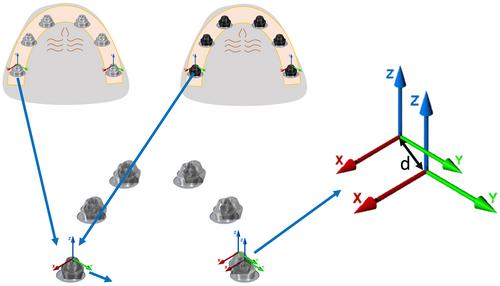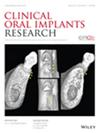This in-vitro study assessed the influence of two intraoral scanning (IOS) protocols on the accuracy (trueness and precision) of digital scans performed in edentulous arches.
Twenty-two abutment-level master casts of edentulous arches with at least four implants were scanned repeatedly five times, each with two different scanning protocols. Protocol A (IOS-A) consisted of scanning the edentulous arch before inserting the implant scan bodies, followed by their insertion and its subsequent digital acquisition. Protocol B (IOS-B) consisted of scanning the edentulous arch with the scan bodies inserted from the outset. A reference scan from each edentulous cast was obtained using a laboratory scanner. Trueness and precision were calculated using the spatial fit analysis, cross-arch distance, and virtual Sheffield test. Statistical analysis was performed using generalized estimating equations (GEEs). Statistical significance was set at α = .05.
In the spatial fit test, the precision of average 3D distances was 45 μm (±23 μm) with protocol IOS-A and 25 μm (±10 μm) for IOS-B (p < .001), and the trueness of average 3D distances was 44 μm (±24 μm) with protocol IOS-A and 24 μm (±7 μm) for IOS-B (p < .001). Cross-arch distance precision was 59 μm (±53 μm) for IOS-A and 41 μm (±43 μm) for IOS-B (p = .0035), and trueness was 64 μm (±47 μm) for IOS-A and 50 μm (±40 μm) for IOS-B (p = .0021). Virtual Sheffield precision was 286 μm (±198 μm) for IOS-A and 146 μm (±92 μm) for IOS-B (p < .001), and trueness was 228 μm (±171 μm) for IOS-A and 139 μm (±92 μm) for IOS-B (p < .001).
The IOS-B protocol demonstrated significantly superior accuracy. Placement of scan bodies before scanning the edentulous arch is recommended to improve the accuracy of complete-arch intraoral scanning.



